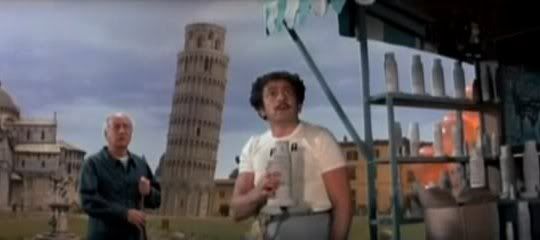
"Never underestimate the power of computers." - ROSS WEBSTER
Superhero movies have been with us almost as long as there have been superhero comics. In the early days, they echoed the comic book format by being made in the form of serials which told the open-ended tales of heroes like Captain Marvel, Batman, Captain America and Superman, who incidentally was the subject of the first full-length superhero movie, Superman and the Mole Men, in 1951. Beyond that, stories about men in capes and costumes seemed better suited to the small screen, where the Adventures of Superman flourished in the '50s and a campy take on Batman did the same in the '60s, itself spawning a big-screen adaptation. Then came the '70s, which saw more TV series like Wonder Woman and The Incredible Hulk and insufficiently funded TV movies like The Amazing Spider-Man, a pilot that led to a short-lived series, and non-starters like Dr. Strange and Captain America which were decidedly underwhelming on the level of spectacle.
The main problem with these productions was, with their limited TV budgets, none of them could hope to duplicate the feats that their characters regularly did on the page -- at least not without looking totally ludicrous in the process. Then came 1978's Superman: The Movie, which showed that all you had to do was spend a little money (a little being roughly $55 million) and you could believe that a man could fly. In the wake of fantasy and science fiction blockbusters like Star Wars and Close Encounters of the Third Kind, Superman showed that comic book heroes also had a place at the table, even if the man from Krypton was pretty much the only game in town for the next decade. In the meantime, there were sequels (and money) to be made and since original director Richard Donner was out of the picture, having burned his bridges with producers Alexander and Ilya Salkind and Pierre Spengler, they needed to find a substitute and fast.
March 2010 Archives

"There's something very familiar about all this." - BIFF TANNEN, AGED 77
Roger Ebert defined a sequel as "a filmed deal," and it's amazing how accurately the truly odd Back to the Future Part II reflects that definition. The supplemental materials on the movie's DVD are surprisingly candid in laying out why the movie exists and why it took the form that it did. When the first Back to the Future was released in 1985, it was anything but a sure thing. The film's star, Michael J. Fox, was not a household name yet, and the film's co-creators (Robert Zemeckis and Bob Gale) had failed to attain mainstream success with their two previous films, I Want to Hold Your Hand and Used Cars. Worse yet, the Zemeckis/Gale-scripted 1941, directed by Steven Spielberg, had been a financial disaster for Universal Pictures. So another Zemeckis/Gale comedy with Spielberg as producer was a risky proposition. In fact, the film could easily have turned out to be another embarrassing boondoggle for Universal.
But, of course, the first film was a massive worldwide hit, the top-grossing American film of 1985. A sequel was inevitable, and Universal informed Zemeckis and Gale that one would happen whether they were involved or not. So they were now "locked in," so to speak, as were most of the members of the first film's cast. Strangely, though, it was the holdout of one of the supporting players, Crispin Glover, that provided the catalyst for the sequel's plot in which his character (loveable nerd George McFly) is mysteriously killed off, creating another "time travel" problem for the heroes, Doc and Marty, to solve.
